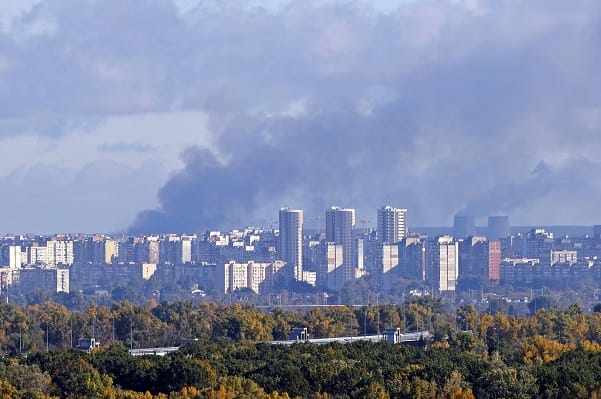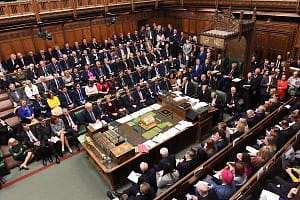One year on from the Russian invasion of Ukraine, leading global intelligence and cyber security consultancy S-RM has compiled a series of key datapoints tracking the expansion and effect of sanctions regimes imposed in response to the conflict.
Data shows that over 10,000 list-based sanctions have been imposed by Australia, Canada, the EU, France, Japan, Switzerland, the UK, the US and Ukraine on Russia from 22nd February 2022 to 10th February 2023, comprising 10,608 restrictions on individuals, 3,431 restrictions on entities, 492 on institutions and 3 on vessels.
Over 1,000 business have curtailed their Russian operations since February 2022.
Nations sanctioning Russia – led by the US, EU nations, the UK, Australia and Japan – now represent over two-thirds of global GDP.
Ian Massey, Head of Corporate Intelligence, EMEA at S-RM said, “2022 saw one of the most significant moments of broad international collaboration in recent history, with the US, UK and EU leading the world on imposing sanctions in response to Russia’s invasion of Ukraine.
“In total, over 30 allied nations across the world have levied the most coordinated and wide-ranging economic restrictions ever seen, driving Russian GDP growth to the lowest amongst countries surveyed by the IMF.
“As we reach the first anniversary of the invasion, the economic and geopolitical story is far from over. Expect sanctions pressure on Russia to only increase as the predicted spring offensive begins and Western nations face increasing internal and external pressure to increase military and financial support for Ukraine.”
A breakdown of the sanctions immediately following the invasion:
- Following the full-scale invasion of Ukraine on 24th February 2022, the US, the UK, and the EU expanded their existing sanctions regimes on Russia, including coordinated efforts to freeze the assets of major Russian banks, accounting for the single biggest financial sanction in history,4 as well as an asset freeze against President Vladimir Putin and Foreign Minister Sergei Lavrov.
Further examples include:
-
- Cutting Russia’s access to key capital markets, targeting 70% of the Russian banking market, as well as key state-owned companies, including in the field of defence.
- Prohibiting the sale, supply, transfer or export to Russia of specific goods and technologies in oil refining.
-
- Banning the sale of all aircraft, spare parts and equipment to Russian airlines.
- Imposing further restrictions on exports of dual-use goods and technology, as well as restrictions on exports of certain goods and technology which might contribute to Russia’s technological enhancement of its defence and security sector.
- The introduction of sanctions against the Russian central bank.
- The list of designated persons was expanded, including against Alisher Usmanov, a prominent businessman with significant foreign assets and Dmitry Peskov, President Putin’s Press Secretary. Restrictive measures were further introduced against family members of designated persons, organisations spreading “false narratives”, and more than 20 Russian defence firms.
Penelope Jenkins, Senior Associate at S-RM added, “The effect of international sanctions on Russia has been significant over the course of the year, with estimated domestic inflation increasing sharply to almost 14% and the Moscow Exchange main index falling by over a third. Putin has been keen to highlight that Russian GDP has still grown slightly, but this is a thin sliver of optimism compared to the wider pressure prompted by sanctions regimes.
“Perhaps more worrying for Russia is the mass emigration of well-qualified professionals, a ‘brain drain’ which is sure to cause long-term damage to the Russian economy that is yet to fully manifest.”
Key sanctions milestones from 28 February, 2022 to present include:
- On 28th February 2022, the Central Bank of Russia was blocked from accessing more than USD 400 billion in foreign-exchange reserves held abroad.
- On 1st March, the French finance minister Bruno Le Maire reported that the total amount of Russian assets being frozen by sanctions amounted to USD 1 trillion.
- On 2nd March, the EU excluded seven Russian banks from SWIFT, the principal messaging network through which international payments are initiated. On the same day, Visa, Mastercard and American Express announced they were blocking Russian banks from their payment networks following international sanctions in response to Moscow’s invasion of Ukraine.
- On 8th March, US President Joe Biden ordered a ban on imports of oil, gas and coal from Russia to the US.
- On 9th March, the EU introduced expanded sanctions against the Belarusian financial sector as well as reducing financial inflows from Belarus to the EU, in response to Belarus’s support for the Russian invasion of Ukraine.
- An April 2022 article by investigative media outlet The Insider claims that the total value of yachts impounded throughout Europe was over USD 2 billion.
- Also in April, the US, G7, and EU imposed new and more severe sanctions against Russia in response to an escalation of military violence by Russia, and in particular the reported massacre of civilians in the Ukrainian town of Bucha. This included a ban on new investment in Russia, as well as full blocking sanctions on Russia’s largest financial institution, Sberbank, and Russia’s largest private bank, Alfa Bank.
- In June, the EU adopted its sixth package of sanctions against Russia, which included a ban on imports from Russia of crude oil and refined petroleum products and a SWIFT ban for an additional three Russian banks and one Belarusian bank. These sanctions were also in response to widely reported Russian war crimes committed in Bucha and Mariupol.
- On 26th July, the EU renewed its sanctions against Russia for a further six months.15 The EU extended its sanctions against trade, finance, technology and other industries in Russia by another six months in January 2023.16
- In October, the UK and EU imposed sanctions against Iranian individuals and business responsible for supplying Russia with kamikaze drones used in the war against Ukraine.17 The US brought in similar measures in November.
- On 28th November, the EU added the violation of sanctions to the list of EU crimes.
- In February 2023, the G7, the EU, and Australia set caps on the price of seaborne Russian oil products in order to reduce revenue streams generated from inflated global oil prices funding Russia’s war in Ukraine, while ensuring that third countries can continue to secure affordable oil.






Leave a Comment